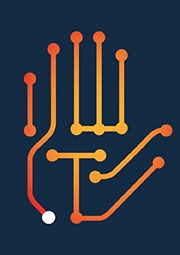Q&A with Wearable Technologies Associate Editor: Lorenzo Masia

Oncoming Associate Editor Lorenzo Masia, Institut für Technische Informatik (ZITI) answers our questions about their work and the open access journal Wearable Technologies.
What first attracted you to the field of wearable technologies?
I believe design for robotics and technology, in general, is gradually drifting towards new paradigms which are complementary to the classical ones and, at the same time, co-existing. With recent advancements in miniaturization of actuation and sensing, as well as in computational capabilities, we are looking towards new horizons, and human augmentation is one of the most promising.
What are you currently working on that you’d like to tell us about?
Wearable robotic suits is probably the research stream on which my efforts are mostly routed. It is a new frontier in robotics involving several actors and competences, yet posing its bases on classic Robotics and Control Design. A young researcher who wants to be introduced to soft robotic suits must embrace several disciplines to fully comprehend such field. These ranges from classic robotics design/control, to textile design, biomechanics, ergonomics and psychophysics.
What do you think the journal Wearable Technologies will bring to the field?
Like prehistoric clothing have been once the main protection from nature, nowadays we live in an Era where wearable technology must provide the next step to our evolutionary path. This will impact multiple aspects of everyday life.
What are some of the challenges facing the field today?
I believe engineering of wearable devices is transversally permeating Science and its practical spheres. The new challenges are more “open calls” for experts from different backgrounds and synergistic efforts from multiple actors are the paramount need.
In which areas of the wearable technologies field do you expect to see growth in the next five to ten years?
Design guidelines for wearable technology must have a common fulcrum around which multiple professional entities, not only academic, must rotate: Engineers, Clinicians, Psychologists, Healthcare managers, Industry representatives, Operational and line Managers and Investment professionals. I expect the field to be able to intake multiple domains from industry, healthcare and why not sport and personal fitness.
Why should authors publish in Wearable Technologies?
I believe the journal will differentiate itself and create an own niche able to embrace multiple sectors, as previously described, but at the same time keeping a determined and clearly defined scientific track. We have a multifaceted editorial team to attract a wide variety of submissions from several complementary fields and make them converge with our future vision, to bring to life a new global community in Wearable Technology.







